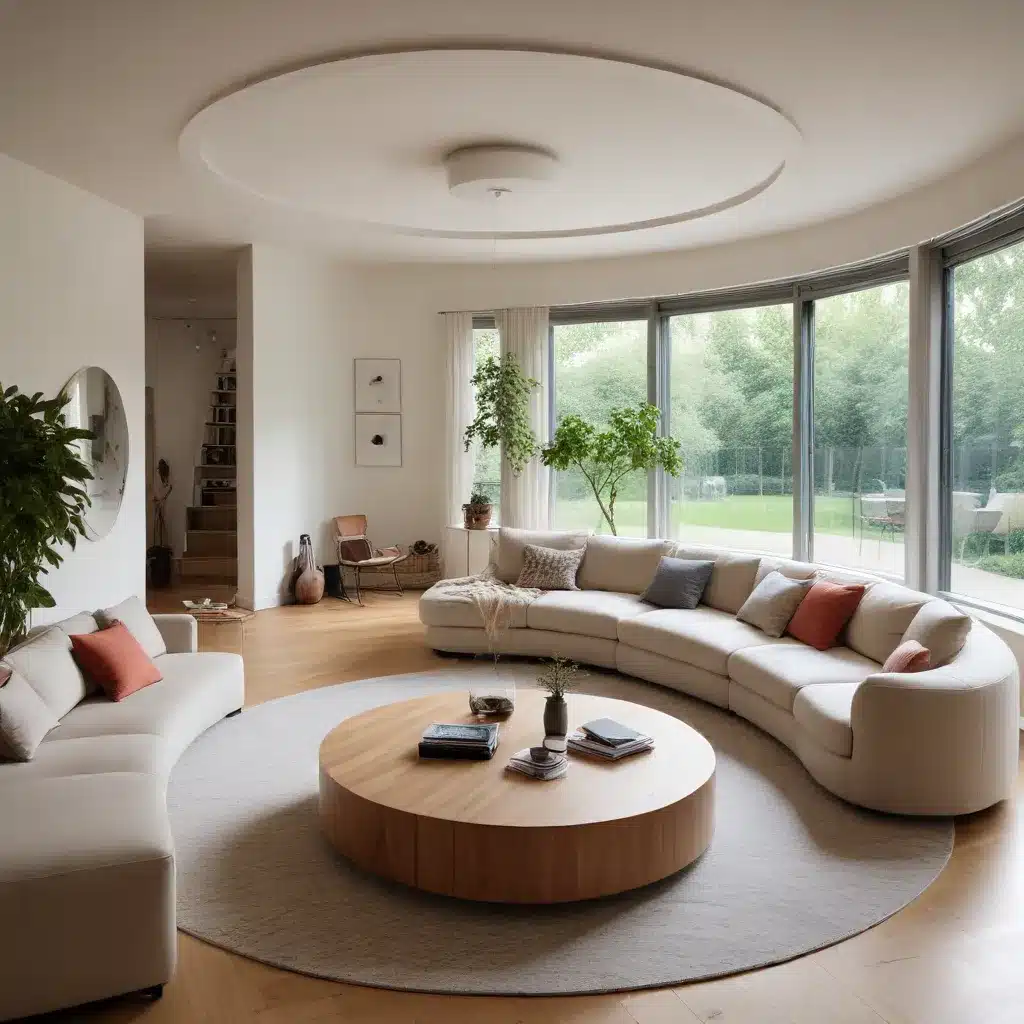
Embracing Sustainability and Adaptability in Interior Design
In an era where sustainability and versatility are paramount, the modern home requires thoughtful design solutions that cater to both form and function. As a seasoned construction professional and interior designer, I’m excited to share practical insights and innovative ideas that can transform your living spaces into fluid, adaptable sanctuaries.
Rethinking the Traditional Living Room
The living room has long been the heart of the home, a place where family and friends gather, relax, and create memories. However, with the rise of open-concept floor plans and the need for multi-functional spaces, the traditional living room layout is evolving. One innovative approach is the circular living room, which offers a unique and captivating spatial arrangement.
By arranging furniture and seating in a circular or semi-circular configuration, you can foster a sense of intimacy and togetherness. This layout encourages face-to-face interactions, facilitating deeper conversations and a more interactive social experience. Additionally, the circular design can help to optimize the flow of movement, making the space feel more open and inviting.
To incorporate a circular living room into your home, consider placing the sofa and chairs in a curved arrangement, with a central coffee table or ottoman as the focal point. Experiment with different seating options, such as modular sectionals or swivel chairs, to create a flexible and adaptable layout. Complement the circular design with a rug that echoes the shape, and use lighting and decor to emphasize the flow of the space.
Embracing Temporary Spaces
In the ever-changing landscape of modern living, the concept of “temporary spaces” has emerged as a creative solution to the evolving needs of homeowners. These spaces, which can serve a variety of functions, offer a level of adaptability that is particularly valuable in smaller homes or apartments.
One example of a temporary space is a suspended living room, which can be employed in urban settings where square footage is limited. By suspending a portion of the living room over a larger open space, such as a stairwell or entryway, you can create an illusion of additional square footage without permanently altering the floor plan. This technique not only maximizes the use of vertical space but also adds a unique and visually striking element to the interior design.
To create a suspended living room, consider incorporating lightweight, modular furniture that can be easily reconfigured or moved. Opt for a minimalist aesthetic with clean lines and a neutral color palette to maintain a cohesive and airy feel. Integrate adjustable lighting and strategic storage solutions to ensure the space remains functional and uncluttered.
Sustainable Design Practices
As we strive to create more livable, eco-friendly homes, sustainable design practices have become increasingly important. One key aspect of sustainable interior design is the use of natural materials, which not only contribute to a healthier indoor environment but also align with the principles of circular living.
When selecting materials for your home renovation or design project, look for options like natural stone, wood, and textiles that are ethically sourced and have a low environmental impact. These materials not only add warmth and character to your spaces but also have the potential to be repurposed or recycled at the end of their lifespan.
Another sustainable practice to consider is multi-functional furniture. By choosing pieces that serve more than one purpose, you can reduce the overall footprint of your home and minimize waste. For example, a coffee table with hidden storage or a sofa with built-in recliners can provide both form and function, while also contributing to a more efficient and sustainable living environment.
Design Trends and Budget-Friendly Solutions
As an experienced interior designer, I understand the challenges homeowners face when it comes to creating a well-designed, visually appealing space within a limited budget. Fortunately, there are numerous design trends and budget-friendly solutions that can help you achieve your desired aesthetic without breaking the bank.
One popular trend is the use of thrifted and vintage furnishings. By scouring second-hand stores, flea markets, and online platforms, you can uncover hidden gems that can be repurposed and incorporated into your living room design. These unique pieces not only add character and personality to your space but also help to reduce waste and support a more sustainable approach to interior design.
Another budget-friendly solution is to focus on affordable yet high-impact accessories. Strategically placed artwork, throw pillows, and decorative accents can instantly transform the look and feel of a living room without requiring a significant investment. By carefully curating these elements, you can create a visually cohesive and visually appealing space that reflects your personal style.
Conclusion: Embracing the Future of Living Spaces
As we navigate the evolving landscape of modern living, the ability to adapt and embrace sustainable practices has become increasingly essential. By incorporating circular living room designs, temporary spaces, and budget-friendly solutions, you can create a home that not only reflects your personal style but also aligns with the principles of sustainability and adaptability.
Remember, the key to a successful living room transformation lies in thoughtful planning, creative problem-solving, and a willingness to explore innovative design concepts. I encourage you to experiment, take risks, and embrace the endless possibilities that await in the world of interior design. Local Builder London is here to support you every step of the way, offering expert guidance and practical solutions to help you transform your living spaces into timeless, sustainable havens.


